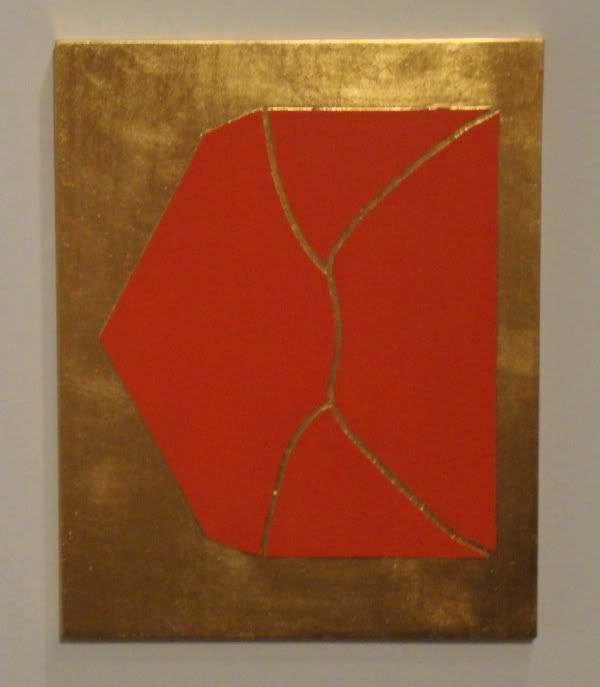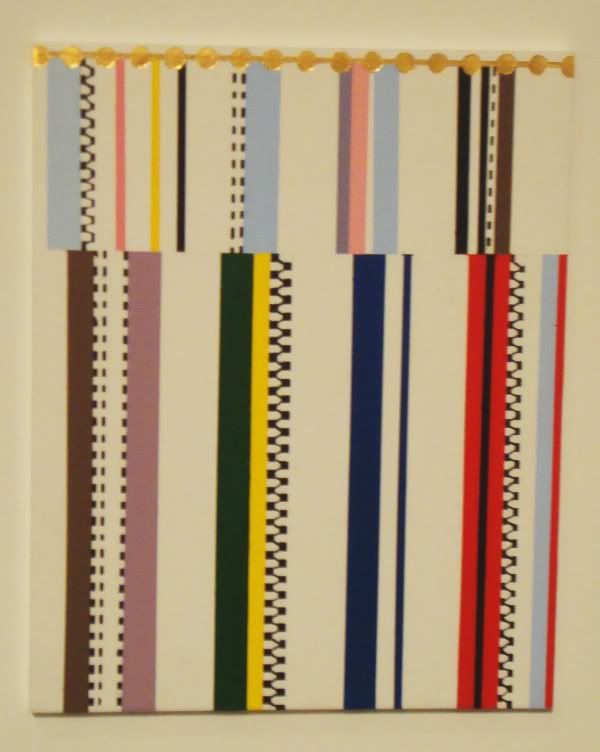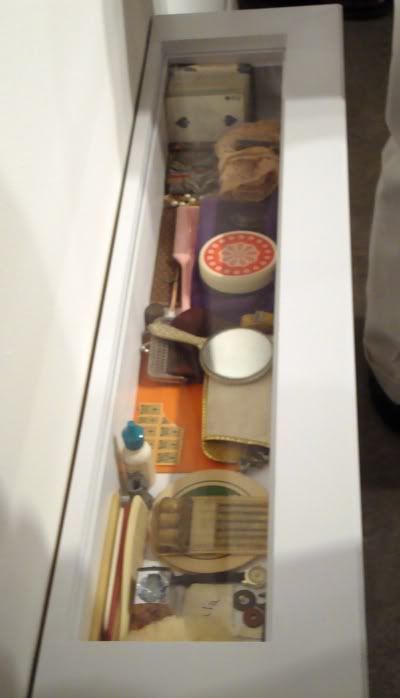
Melanie Crader, don't know the title, some kind of paint on board
They are maybe a foot wide by about 18 inches high--maybe a little bigger, but not much. Painted on board, they don't have much three-dimensional presence. Crader uses some kind of metallic paint or leaf on some of them.

Melanie Crader, don't know the title, some kind of paint on board
Some of the images are not really abstract. Occasionally you can see that Crader is depicting some real thing, like this envelope.

Melanie Crader, don't know the title, some kind of paint on board
But mostly the pieces seem to be patterned abstractions, usually with fairly restricted color-schemes (but not always). They look great. The size, the flatness, the colors all work. They feel familiar, too.

Melanie Crader, don't know the title, some kind of paint on board
And there is a reason for that. Crader's grandmother was not much of a packrat, apparently. She died fairly young, and passed on a small number of objects to her children. Crader discovered a small box of these objects ibn her mother's attic--all that was left of Eula. The objects are on display as well.

Now the paintings are not free-floating abstractions. They are depictions--abstracted to be sure--of her grandmother's last possessions. They collectively form a sort of portrait of Eula. A pretty strange way to depict a person, no? Maybe, but this has a long history in American art. Had Crader been a late 19th century American artist, she could have made her "portrait" of Eula in the fashion of William Hartnett or John Peto--her ancestors. They too used mundane, modest objects to tell personal stories.




No comments:
Post a Comment